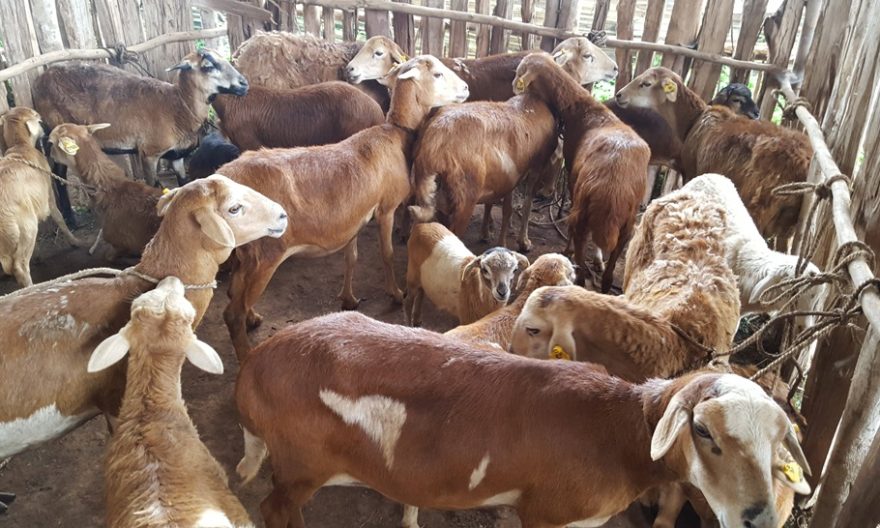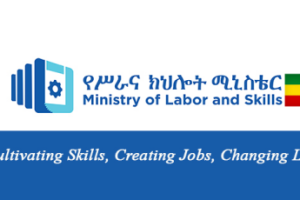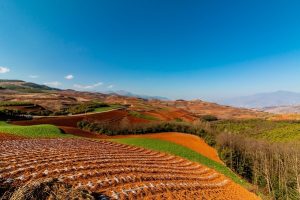
Ethiopia is attempting to double its livestock output and maximize its agricultural potential in order to improve food security and accelerate national economic growth. Ethiopia is putting into effect a variety of programs and plans that combine cutting edge technologies, sustainable farming methods, and modern farming techniques.
In addition to boosting output, this large-scale project intends to improve the quality of livestock products, ensuring Ethiopia’s ongoing standing in the world’s agricultural arena while safely guarding its rich livestock heritage.
The production of livestock is significant for Ethiopia’s economy and agricultural sector. Ethiopia has become one of the major livestock-producing nations in Africa as a result of its numerous years of utilizing traditional methods for raising cattle, such as cattle, sheep, goats, and camels.
The farming of animals is essential to Ethiopia’s ability to meet its food security demands and encourage economic growth, as it provides a living for millions of people.
For a significant component of the community, especially in rural areas, the sector offers employment and income prospects. Taking into account that meat, milk, and eggs are cornerstones of the Ethiopian dishes, it serves as the country’s main source of nutrition. Furthermore, livestock is a great asset for farmers since it provides a safety net against sudden changes in the economy.
In fact, a study demonstrated that animals account for 47 percent of the agricultural GDP. This underscores the importance of the animal sector in driving economic growth and the urgent need to transform Ethiopia’s animal resources into a valuable community asset.
Despite its immense potential, the livestock sector in Ethiopia faces several challenges. Limited access to improved technologies, veterinary services, and market infrastructure hampers productivity and profitability. Disease outbreaks, such as foot-and-mouth disease, pose a significant risk to livestock health. Climate change and recurrent droughts further exacerbate the vulnerability of livestock farmers, affecting animal productivity and food security.
The Ministry of Agriculture has identified and begun addressing the obstacles preventing Ethiopia’s livestock industry from reaching its full potential.
Agriculture State Minister Fikru Regassa (PhD) has underscored the paradox of Ethiopia’s livestock sector: despite the country having one of the largest cattle populations in Africa, the production and productivity levels remain alarmingly low.
He noted that several systemic issues are at play, including improper handling techniques, inefficient breeding practices, limited access to quality feed, and the prevalence of various animal diseases.
These challenges hinder the growth potential of a sector that could significantly contribute to the national economy. In response, the Ministry of Agriculture is implementing a comprehensive approach designed to tackle these issues head-on.
One of the most pressing threats to the livestock industry is climate change, which manifests in unpredictable weather patterns, such as severe droughts and floods. He mentioned that the climatic shifts can lead to animal displacement and, in the worst cases, increased mortality rates among livestock.
To combat these adverse effects, the Ministry is working to enhance water access across the country that is vulnerable to drought. For this, the installation of processing equipment in drought-prone areas will facilitate the production of feed, ensuring that livestock can be adequately nourished even during challenging climatic conditions, he said.
Additionally, Fikru (PhD) emphasized that the need for investment in research and development focused on creating premium feed formulations. This is crucial not only for improving the nutritional quality of the feed available to livestock but also for promoting sustainable fodder production practices.
The ministry is acutely aware that high-quality feed is foundational to improving animal health and productivity. Furthermore, there is a concerted effort to prioritize technological advancements that will enhance processing capacities within the livestock sector. It also aims to encourage value addition, thereby reducing reliance on imported goods and fostering a more self-sufficient agricultural economy.
The ministry’s initiatives are already yielding positive results, particularly under the Yelemat Tirufat Initiative, which has set an ambitious target of doubling livestock production and productivity between 2022 and 2024. This goal is not merely aspirational; it reflects the Ethiopian government’s commitment to transforming the livestock sector into a pivotal engine of economic growth. By focusing on such transformative initiatives, the government aims to stimulate rural economies and enhance food security, he added.
In addition to improving production capabilities, the ministry is also focused on better market access for small-scale producers. This includes facilitating easier transportation of animal goods to urban centers and export markets, as well as establishing processing and storage facilities for dairy products. Such infrastructure improvements are vital for extending the shelf life of these perishable goods, ultimately benefiting small-scale farmers who often lack the resources to compete in larger markets.
Moreover, Fikru (PhD) stressed that the benefits of investing in infrastructure and training programs to improve cattle handling practices are crucial for the overall health of the animals and can directly influence productivity levels.
He further advocated for a focus on specialized breeds that are well-suited to specific environments and market demands, which can help optimize productivity and meet consumer needs.
Over one year, he stated that the ministry administered 23 different vaccines, costing approximately 102 million Birr, to prevent and control animal diseases that threaten livestock health. Also, it’s maintaining a healthy livestock population, which is the backbone of Ethiopia’s agricultural sector. Collaboration with various stakeholders is vital to combat smuggling activities that undermine the industry and to ensure the integrity of the livestock market, he noted.
For the sake of handling the complex issues the industry faces, Fikru emphasized the significance of collaborations between governmental organizations, academic institutions, commercial businesses, and others. Ethiopia hopes to turn the livestock industry into a major driver of national development, food security, and economic growth by realizing the full potential of its animal resources.
By addressing the multifaceted challenges facing the industry, Ethiopia hopes to unlock the full potential of its animal resources. This commitment not only aims to boost national economic growth but also seeks to enhance food security and improve the livelihoods of countless farmers across the nation.
Besides, the government should collaborate with all concerned parties to enhance the livestock sector, and it has implemented various strategies and policies to address these challenges and harness its potential. Efforts are being made to improve animal health services, promote selective breeding programs, enhance feed availability and quality, and develop market linkages.
The government is also investing in research and development, capacity building, and public-private partnerships to foster sustainable and inclusive growth in the livestock sector. Moreover, with the right support and investments, Ethiopia’s livestock sector has the potential to contribute significantly to poverty reduction and the economic development of the country.
BY FIKADU BELAY
The Ethiopian Herald September 8/2024





